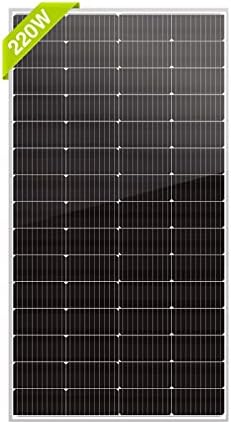### The Rise of Solar Energy: Transforming Homes and Communities
Imagine waking up each morning to the sun casting a warm glow through your window, knowing that you’re harnessing its power to sustain your home. That was the moment I realized that solar energy could not only transform homes but also entire communities. Over the years, I’ve seen firsthand how solar panels can turn rooftops into renewable energy sources, reduce reliance on traditional power grids, and empower people to live more sustainably. With more folks embracing this technology, solar energy is indeed having its moment—and the future looks bright!
#### The Solar Revolution is Here
The trend towards solar energy has surged in recent years. According to the Solar Energy Industries Association (SEIA), solar installation has increased by more than 20% annually since the early 2000s. With prices of solar panels plummeting—down by about 80% since 2010—homeowners are discovering how accessible and beneficial solar energy can be. No matter the size of your home or the layout of your community, there’s a solar solution just waiting to be tapped.
But why has solar energy gained such momentum? The answer lies in a combination of environmental necessity, economic incentives, and technological advancements. As climate change becomes an increasingly pressing concern, using sustainable energy sources is not just a trend; it’s a crucial shift for the health of our planet.
#### The Benefits of Solar Energy
1. **Cost Savings**: One of the most appealing aspects of solar energy is the potential for long-term cost savings. Once the panels are installed, the ongoing maintenance costs are relatively low. Moreover, many states offer tax incentives that can significantly reduce the upfront investment. For families burdened by rising electricity bills, transitioning to solar can mean financial relief.
2. **Energy Independence**: By going solar, homeowners can generate their own electricity, reducing their reliance on traditional power grids. This not only shields them from rate hikes but also provides a sense of autonomy. Imagine never having to worry about power outages again!
3. **Environmental Impact**: Switching to solar can substantially reduce your carbon footprint. Traditional energy sources like coal and natural gas emit greenhouse gases, while solar energy is clean and renewable. By opting for solar, you’re contributing to a healthier planet for future generations.
4. **Job Creation**: The rise of solar energy isn’t just beneficial for homeowners; it’s also a boon for the job market. Solar installation and maintenance require skilled labor, leading to new jobs in manufacturing, installation, and engineering. A thriving solar industry is, in essence, a thriving economy.
#### Innovations in Solar Technology
The solar energy landscape is not stagnant; it’s constantly evolving. Recent advancements have made solar technology more efficient, affordable, and user-friendly.
– **Solar Roof Tiles**: Instead of bulky panels, companies like Tesla are introducing solar roof tiles that integrate seamlessly into the architecture of your home. These tiles generate electricity while also serving a functional purpose.
– **Energy Storage Solutions**: Innovations in battery storage technology mean that homes can now store excess solar energy generated during the day for use at night. Systems like the Tesla Powerwall allow homeowners to have energy on demand, on their terms.
– **Community Solar Programs**: For those who may not have suitable roofs for solar panels—such as renters or those living in densely populated areas—community solar programs are gaining popularity. These allow individuals to buy into shared solar installations, giving them access to renewable energy without the upfront costs of individual systems.
#### Transforming Communities with Solar Energy
The shift toward solar energy is not limited to individual homes; it’s making waves in entire communities.
**Community Initiatives**: Many local governments are investing in solar projects to power municipal buildings, schools, and even public transportation. This not only reduces operational costs but also serves as a visible commitment to sustainability, encouraging residents to consider solar for their own homes.
**Neighborhood Solar Gardens**: These initiatives allow local residents to pool resources and funds to invest in a shared solar energy system. Such programs foster community spirit and make renewable energy more accessible to those who may not have the means for individual installations.
**Educational Programs**: Schools across the nation are incorporating solar technology into their curricula, teaching students about sustainable energy practices. This not only primes the next generation for a greener future but also builds community awareness about the benefits of solar.
#### Overcoming Challenges
While the rise of solar energy offers numerous benefits, challenges remain. Some common hurdles include:
– **High Initial Costs**: Despite declining prices, the upfront cost of solar installations can still be a barrier. However, various financing options—like loans or leasing—can help alleviate this concern.
– **Regulatory Hurdles**: Zoning laws, building codes, and permitting processes can sometimes complicate the installation of solar systems. It’s crucial for local governments to streamline these regulations to encourage the adoption of solar energy.
– **Intermittency Issues**: Solar energy relies on sunlight, making it less reliable on cloudy days or during the night. However, the integration of battery storage solutions is rapidly addressing this challenge by providing backup energy when solar power is low.
#### Pro Tips for Going Solar
If you’re considering making the leap into solar energy, here are some handy tips to ensure you make the most informed decision:
1. **Assess Your Home’s Suitability**: Before diving in, consider your roof’s orientation, the amount of sunlight it receives, and whether any nearby trees obstruct the light. A solar professional can conduct a thorough assessment.
2. **Research Incentives**: Many states offer substantial tax credits and rebates for solar installations. Research local incentives to maximize your savings.
3. **Check Your Energy Costs**: Keep track of your energy bills for a few months prior to installation. This data can help assess how much energy you’d need and make it easier to choose the right system.
4. **Consider a Hybrid System**: If you live in an area with inconsistent sunlight, exploring hybrid systems that use both solar and traditional energy sources can provide more reliability.
5. **Get Quotes from Multiple Installers**: Like any major investment, obtaining quotes from multiple solar companies can help you find the best deal. Read reviews and ask for references!
6. **Stay Informed**: Solar technology and policies are constantly changing. Keep yourself updated on the latest advancements and developments in solar energy to make the best choices.
#### The Bright Future Ahead
Solar energy is more than just a passing trend; it’s paving the way for a sustainable future. With decreasing costs, increasing efficiency, and a collective push toward green energy, the solar revolution has officially arrived.
As more communities embrace this change, we can expect to see cleaner air, greater economic independence, and an uplifting sense of community spirit. Let’s recognize that every solar panel installed is a step toward a brighter, greener future. Together, we can harness the power of the sun, transforming not just our homes, but the very fabric of our communities. The only question left is: are you ready to jump on the solar bandwagon? The sun is shining, and it’s time to shine along with it!



